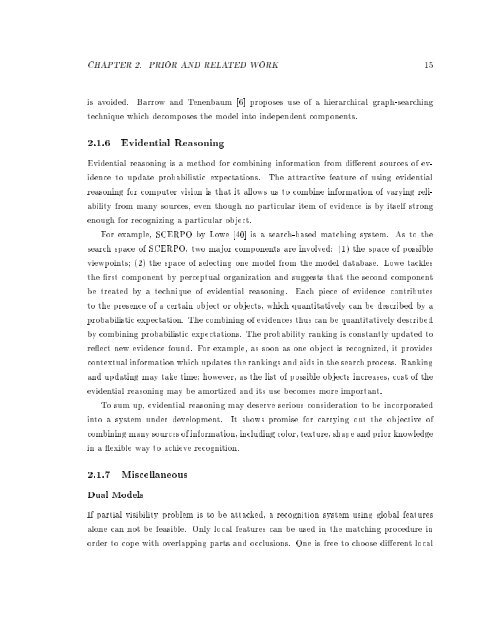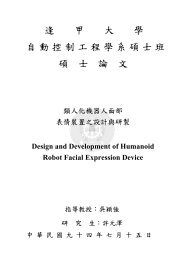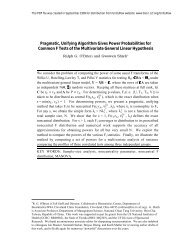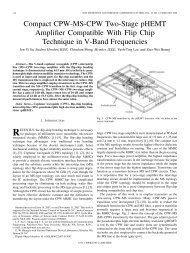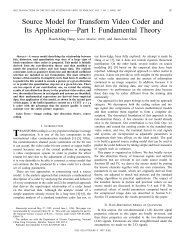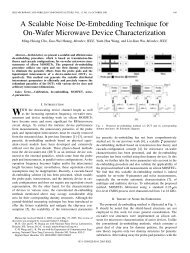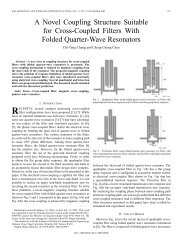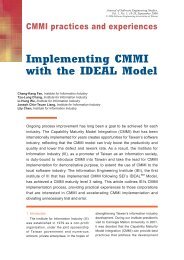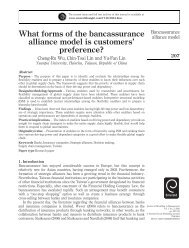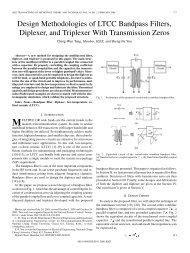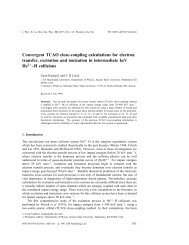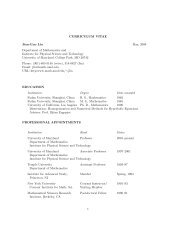A Probabilistic Approach to Geometric Hashing using Line Features
A Probabilistic Approach to Geometric Hashing using Line Features
A Probabilistic Approach to Geometric Hashing using Line Features
Create successful ePaper yourself
Turn your PDF publications into a flip-book with our unique Google optimized e-Paper software.
CHAPTER 2. PRIOR AND RELATED WORK 15<br />
is avoided. Barrow and Tenenbaum ë6ë proposes use of a hierarchical graph-searching<br />
technique which decomposes the model in<strong>to</strong> independent components.<br />
2.1.6 Evidential Reasoning<br />
Evidential reasoning is a method for combining information from diæerent sources of evidence<br />
<strong>to</strong> update probabilistic expectations. The attractive feature of <strong>using</strong> evidential<br />
reasoning for computer vision is that it allows us <strong>to</strong> combine information of varying reliability<br />
from many sources, even though no particular item of evidence is by itself strong<br />
enough for recognizing a particular object.<br />
For example, SCERPO by Lowe ë40ë is a search-based matching system. As <strong>to</strong> the<br />
search space of SCERPO, two major components are involved: è1è the space of possible<br />
viewpoints; è2è the space of selecting one model from the model database. Lowe tackles<br />
the ærst component by perceptual organization and suggests that the second component<br />
be treated by a technique of evidential reasoning. Each piece of evidence contributes<br />
<strong>to</strong> the presence of a certain object or objects, which quantitatively can be described by a<br />
probabilistic expectation. The combining of evidences thus can be quantitatively described<br />
by combining probabilistic expectations. The probability ranking is constantly updated <strong>to</strong><br />
reæect new evidence found. For example, as soon as one object is recognized, it provides<br />
contextual information which updates the rankings and aids in the search process. Ranking<br />
and updating may take time; however, as the list of possible objects increases, cost of the<br />
evidential reasoning may be amortized and its use becomes more important.<br />
To sum up, evidential reasoning may deserve serious consideration <strong>to</strong> be incorporated<br />
in<strong>to</strong> a system under development. It shows promise for carrying out the objective of<br />
combining many sources of information, including color, texture, shape and prior knowledge<br />
in a æexible way <strong>to</strong>achieve recognition.<br />
2.1.7 Miscellaneous<br />
Dual Models<br />
If partial visibility problem is <strong>to</strong> be attacked, a recognition system <strong>using</strong> global features<br />
alone can not be feasible. Only local features can be used in the matching procedure in<br />
order <strong>to</strong> cope with overlapping parts and occlusions. One is free <strong>to</strong> choose diæerent local


